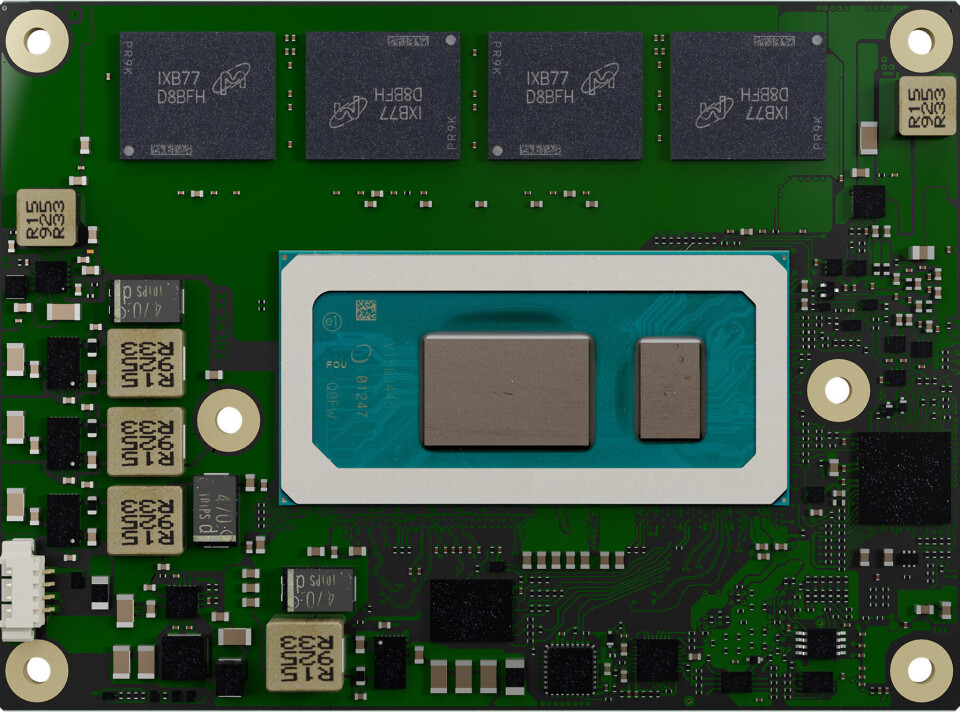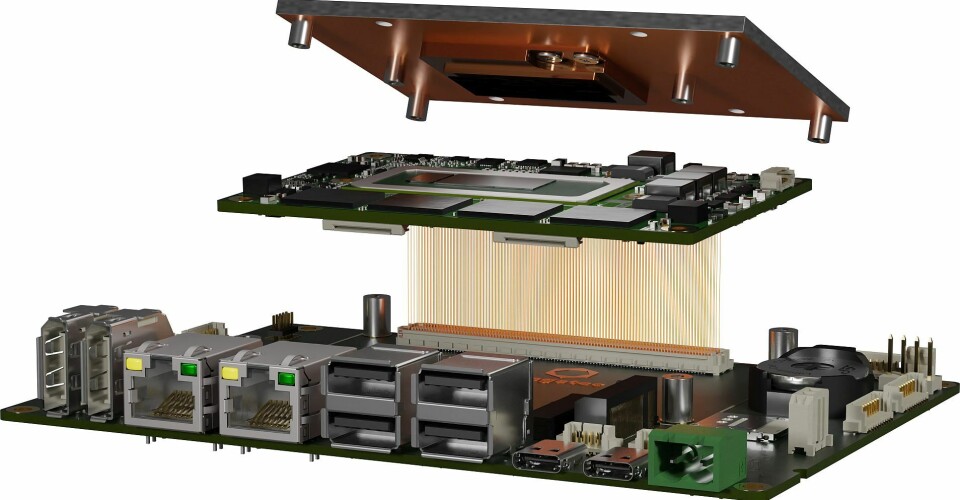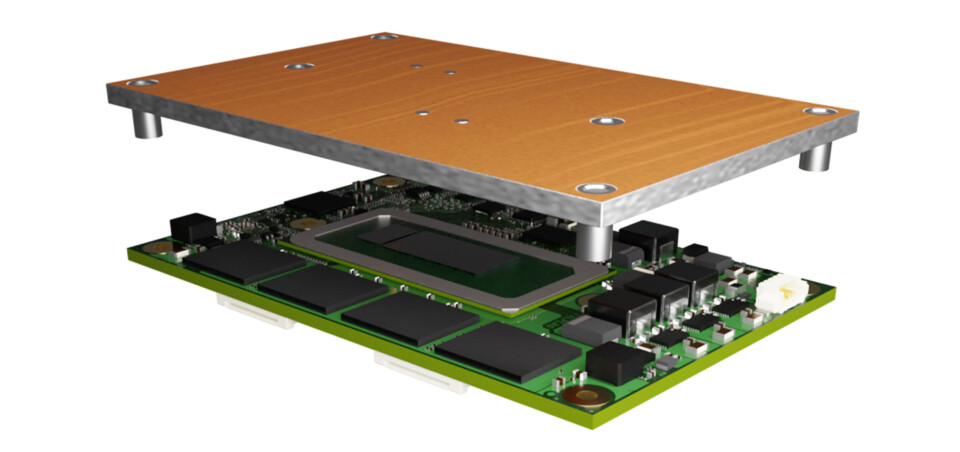Sponset artikkel • COM-HPC Mini ushers in a new era

Coming at last: Design sprints from COM Express Compact to COM-HPC
After the final ratification of the new COM-HPC Mini standard by the PICMG in October 2023, the first modules are now available on the market. By adding a compact formfactor to the module family, they make COM-HPC the most scalable Computer-on-Module standard today. These new modules also open a future oriented upgrade path for developers of compact COM Express Basic and COM Express Compact systems.
Denne artikkelen er 2 år eller eldre
The new COM-HPC Mini modules with 13th generation Intel Core
processors (codename Raptor Lake) will complete the ecosystem open to
developers of third generation modular high-end embedded and edge applications.
An ecosystem which ranges from high-end Server-on-Modules to extremely compact Client-on-Modules that are just a little
larger than a credit card. Even the most space-constrained COM Express Compact
and most of COM Express Mini solutions can benefit from a high-end performance
boost and a significantly larger number of new high-speed interfaces provided
from COM-HPC Mini. Thus, entire product families can migrate to the new PICMG
standard – without requiring significant modification of the internal system
design and housing despite the larger module and carrier board dimensions.

Where migration was stuck
COM-HPC Size A measuring 95x120 mm (11.400 mm²) is still almost 32% larger than the COM Express Compact form factor, which measures 95x95 mm (9.025 mm²). From a footprint standpoint, that’s 25 mm too wide to migrate existing COM Express designs to COM-HPC. Since COM Express Compact is the most widespread COM Express form factor and the high-end using the even larger COM Express Basic form factor, many developers faced considerable challenges – if only in terms of system design dimensions. But smaller is now possible. That’s why COM-HPC Mini with its 95x70 mm is a real liberator, opening up entirely new perspectives for the many ultra-compact system designs in particular.

Admittedly, COM-HPC has only 400 pins, which is 40 pins less than COM Express Basic (440). However, most ultra-compact system designs never utilize the entire interface package anyway. With 16 PCIe and 16 USB interfaces, 3 or even 4 display interfaces, plus many other of the latest peripheral interfaces, including 2x MIPI CSI for cameras, CAN and optional SerDes, the COM-HPC Mini specification really boasts everything that is state-of-the-art today. Even functional safety support has been added as a new feature. At the same time, the new specification has turned its back on legacy interfaces – but without going too radical, because 2x SATA is still an option.

Newer is better in the long term
Many developers of new applications will also appreciate the added design security, as the COM HPC connector is specified for significantly higher data throughput than COM Express. It is true that the COM Express 3.1 specification, which was launched at the end of 2022 and supports PCIe 4.0 with up to 16 Gbit/s, also provides an upgrade path. However, the end of the line for further performance increases is already in sight. As the launch of 13th generation Intel Core processors showed, the gap is beginning to open as COM-HPC simply offers more. PCIe 5.0 is already supported by this standard, which ultimately enables twice the data throughput. But there’s no need for developers to get nervous if they can live with the limitations of COM Express; COM Express modules will be available for many years to come. However, those who want to align their designs with the latest technology standards can now upgrade existing compact designs with considerably less effort.

A performance leap to COM-HPC is essential for many new applications as requirements are increasing rapidly: AI-based video analytics for situational awareness demands extremely high bandwidths with increasing camera resolutions. Voice control must be latency-free. AI is required to process higher resolution data streams. Graphics in combination with augmented reality is becoming more demanding, while parallel data processing in collaborative Industry 4.0 processes requires minimal latencies for real-time as data throughput increases. Last but not least, cybersecurity also demands more computing power. In addition, system developers are looking for ways to significantly optimize their platforms for the latest connectivity technologies such as Thunderbolt 4. Thunderbolt 4 ports implement power charging, bidirectional data transfer and video display via a single USB-C cable. However, this requires a bandwidth of up to 40 Gbit/s, which is not feasible with COM Express, even in the 3.1 specification.

Take off with 13th generation Intel Core processors
Numerous factors therefore speak in favor of the new COM-HPC standard. The 13th generation Intel Core processors act as an accelerator that will speed the introduction of such new system platforms. I expect a rapid and massive increase in series production of OEM designs based on these new COM-HPC Mini modules, since the new processors offer enormous improvements in many features while being fully hardware-compatible with their predecessors, which makes implementation very fast and easy.
The modules based on the new COM-HPC standard open new horizons for developers in terms of data throughput, I/O bandwidth and performance density with Thunderbolt and superior PCIe support up to Gen 5. The COM Express 3.1 compliant modules, on the other hand, primarily secure investments in existing OEM designs with upgrade options for more data throughput thanks to PCIe Gen 4 support.
COM-HPC Mini is extremely robust
If you now imagine the new Intel processors on COM-HPC Mini and consider ruggedness features such as soldered RAM and support for the extended temperature range, it is easy to see how universally these new modules can be deployed in system solutions that were based on COM Express Basic up to now.





























